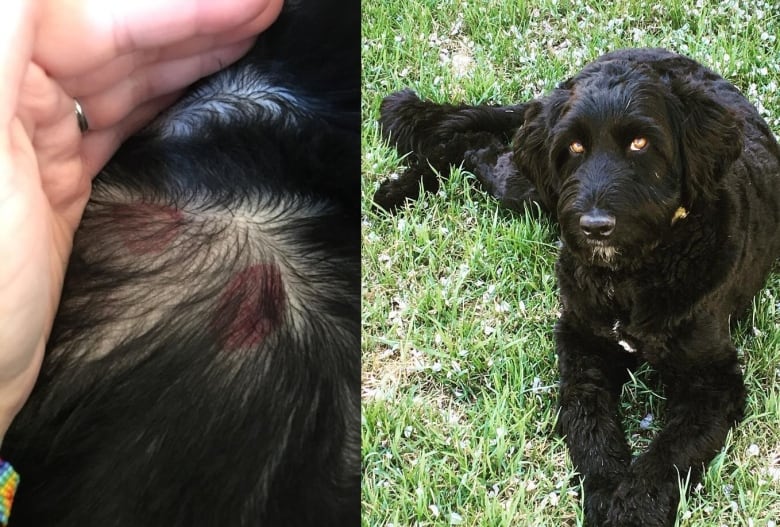No-see-um? Maybe, but you'll sure feel their bites
Humans and dogs can fall victim to these tiny terrors

What's 1.5 millimetres long, has razors for a mouth and attacks brazenly without warning?
The prolific, and bloodthirsty,no-see-um fly.
If you ask University of Alberta biologist Dr. Heather Proctor to describe ano-see-um, it sounds like a creature froma horror movie.
"It has a couple of blades inside its mouth parts and it quickly slices your skin so that you bleed noticeably and then they lap it up," Proctor said in an interview Monday.
"They'll bite you on your ear or fly up your nose getting into little places where you don't think little flies can go."
Despite its name, the no-see-umisn't invisible. It belongs to a large group of biting midges knows as Diptera. About 600 different species live in North America, but only a small fraction are known to bite humans.
"Their saliva can be really itchy and cause an itchy reaction in certain people, much worse than a mosquito bite," said Proctor.
Much like their bloodsucking counterpart the mosquito, no-see-ums also known as punkies typically breed in standing bodies of water like ponds or sloughs.
But unlike mosquitos, no-see-ums stay close to home after sprouting wings.
"They don't occur in giant swarms ... they're more stealthy," Proctor said.
Bites alarm dog owners
Although Proctor said no-see-um bites on humans typically happen during the summer months, it's not uncommon in spring for people to be worried about bites on their dogs, saidDr. Louis Kwantes, a veterinarian in Sherwood Park.
"We called them the mayfly because we often saw them in May," said Kwantes, adding that it's not the scientific name for the bug.
Nicole Dinstel wasn't sure what to think last week when she noticed angry, red bruises on her dogs Carmelo and Doug after a romp at the dog park in Laurier.

"We went straight to Google looking at what it could be," said Dinstel. "They all looked similar. They all leave that same quarter-sized, bright red bruise-looking circle behind."
Dinstel posted pictures of the bites on a Facebook dog page asking for advice. To her surprise, someone suggested they were from the no-see-um.
"I did call our vet to see what it could be, and she said it's really common now," said Dinstel, adding the red marks disappeared in 24 hours.
Kwantes said if there's a bite big enough to cause a reaction or leave a mark,a visit to the vet should bein order.
Some even feed on mosquitoes
Although the no-see-um is apt to suck human and canine blood, Proctor saidthey have a unique mosquito-controlling ability.
"One species of no-see-um is a parasite of mosquitoes. It waits until a mosquitohas fed and then it bites the abdomen of the mosquito and then steals blood from it."
So how do you tell a mosquito bite from a no-see-um bite?
"There will probably be evidence of bleeding from a no-see-um bite," Proctor said.
"If you're bitten by a mosquito, unless you squish it, you don't bleed, you just get a little welt. That's because the mouth parts of the mosquito are very fine."












_(720p).jpg)


 OFFICIAL HD MUSIC VIDEO.jpg)
.jpg)



























































































